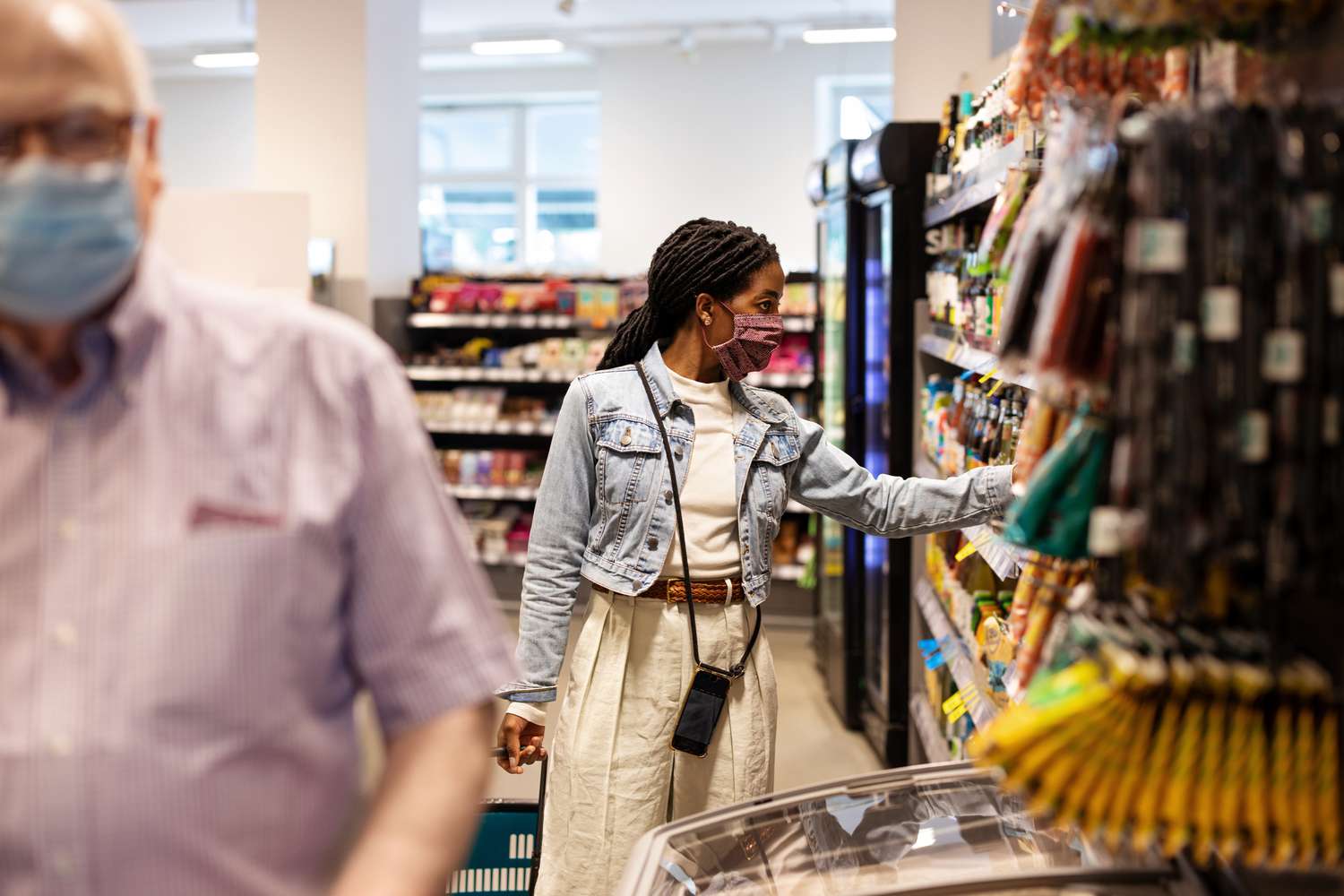What You Should Know About the Possible Return of Face Masks, According to Experts

Are mask mandates coming back?
As health authorities pay careful attention to rising COVID cases—particularly cases involving new EG.5 and BA.2.86 variants—and the calendar moves toward cold and flu season, some may wonder about the potential for mask requirements and mandates.
“I’ve only seen talk of mask mandates on social media. But the public health community is not thinking about mandates at all,' William Schaffner, MD, professor of infectious diseases at Vanderbilt University Medical Center, told Health. 'People should absolutely not fret about mandates.'
That said, Schaffner noted some local health departments in regions with currently intense COVID transmission might have stronger recommendations for mask-wearing.
Additionally, certain settings might opt for masking before a government mandate would be set.
“Some hospitals, schools, and private businesses have brought back masking requirements, usually in response to increased cases or clusters and local epidemiologic trends,” Hannah Newman, MPH, senior director of infection prevention at Lenox Hill Hospital in New York, told Health.
Here's what recent government recommendations for masks are, who may want to consider masking up in the current COVID climate, and what kinds of masks work best against new variants.
The Centers for Disease Control and Prevention (CDC) has not announced new mask mandates, however, it continues to recommend masks as a critical tool to prevent the spread of COVID-19.
The CDC’s advice for individual and community actions around COVID-19 is tied to hospital admission levels, which are currently low for more than 92 percent of the country, a CDC spokesperson told Health.
In the last week, nationwide COVID-19 hospitalizations increased by 8.7%, and total deaths associated with the virus increased by 10.5%.
The CDC evaluates levels of concern as high, medium, and low based on COVID-19 hospital admissions per 100,000 population.
The recommendation for a medium or low COVID concern includes:
The recommendation for a high COVID concern includes:
As winter approaches, Schaffner explained more areas may become medium or high risk.
“It has a somewhat larger increase in the wintertime,' he said. 'So we can expect that going into the winter we will see more cases and as a consequence more hospitalizations, and I’m afraid more deaths due to COVID.'
While anyone can choose to wear a mask for their protection at any time, public health professionals recommend that those at high risk of severe illness from COVID-19, influenza, or RSV, or who live with a person who is at risk for severe illness from these, wear a mask.
“Masking considerations are important when cases are high in your community, especially if you plan to attend activities that are crowded, indoor, and/or lacking good ventilation,” said Newman.
Whether you’re high-risk for COVID or not, if you have tested positive for COVID-19 or have been exposed and are unable to isolate, Newman said you should definitely wear a mask when in public or around others.
Aside from an exposure scenario, more situations come down to a personal decision on whether or not to mask up.
“Unfortunately, there is no perfect formula to prescribe masking, but things like local COVID trends, ventilation, the number of people who will be around you, the distance between people, higher risk activities (like singing, screaming, etc.), and time spent can be used to decide your personal comfort level with the decision to wear a mask or not,” she said.
Choosing the right face mask is still important when you're prioritizing your health and wellbeing. A well-fitted mask that covers the nose and mouth and does not gape will be effective at preventing droplets from spreading.
A properly fitted N95 mask will provide the highest level of filtration and protection, “though it is aimed towards situations when the virus may be aerosolized and not necessarily needed under most normal circumstances,” said Newman.
She explained that medical-grade procedural and surgical masks are effective due to their filtration properties and resistance to fluids.
Multi-layer cloth masks provide another option as long as they are wearable, breathable, and worn properly with a tight fit covering the mouth, chin, cheeks, and nose.
“If you wear your mask below the nose, that’s worthless,” said Schaffner.
To check if your mask fits correctly over your nose, mouth, and chin, the CDC recommends the following:
Schaffner explained that masks are most effective if large numbers of people wear them. However, he said that even if you're the only one wearing a mask, you'll still be experiencing some enhanced protection from spreading illness.




